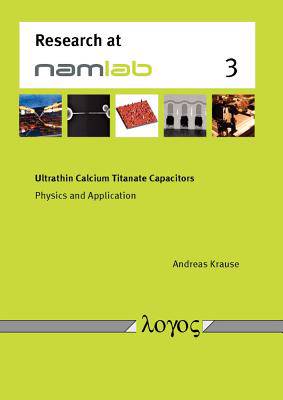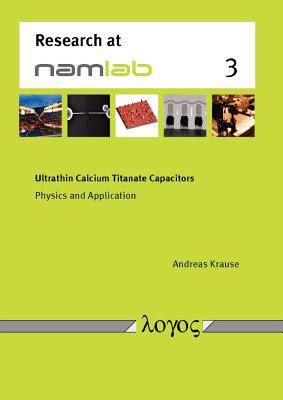
Je cadeautjes zeker op tijd in huis hebben voor de feestdagen? Kom langs in onze winkels en vind het perfecte geschenk!
- Afhalen na 1 uur in een winkel met voorraad
- Gratis thuislevering in België vanaf € 30
- Ruim aanbod met 7 miljoen producten
Je cadeautjes zeker op tijd in huis hebben voor de feestdagen? Kom langs in onze winkels en vind het perfecte geschenk!
- Afhalen na 1 uur in een winkel met voorraad
- Gratis thuislevering in België vanaf € 30
- Ruim aanbod met 7 miljoen producten
Zoeken
€ 85,45
+ 170 punten
Omschrijving
To enable further scaling for future generations of DRAM capacitors, significant efforts to replace Zirconium dioxide as high-k dielectric have been undertaken since the 1990s. In calculations, Calcium titanate has been identified as a potential replacement to allow a significant capacitance improvement. This material exhibits a significantly higher permittivity and a sufficient band gap. The scope of this thesis is therefore the preparation and detailed physical and electrical characterization of ultrathin Calcium titanate layers. The complete capacitor stacks including Calcium titanate have been prepared under ultrahigh vacuum to minimize the influence of adsorbents or contaminants at the interfaces. Various electrodes are evaluated regarding temperature stability and chemical reactance to achieve crystalline Calcium titanate. An optimal electrode was found to be a stack consisting of Pt on TiN. Additionally, this thesis presents fundamental results on the creation, physical and electrical characterization of Calcium titanate nanocrystallites embedded in an amorphous matrix. Capacitors with these nanocrystallites exhibit an increased permittivity of 55 with low leakage currents comparable to currents in amorphous layers.
Specificaties
Betrokkenen
- Auteur(s):
- Uitgeverij:
Inhoud
- Aantal bladzijden:
- 160
- Taal:
- Engels
Eigenschappen
- Productcode (EAN):
- 9783832537241
- Verschijningsdatum:
- 4/07/2014
- Uitvoering:
- Paperback
- Formaat:
- Trade paperback (VS)
- Afmetingen:
- 145 mm x 211 mm
- Gewicht:
- 57 g

Alleen bij Standaard Boekhandel
+ 170 punten op je klantenkaart van Standaard Boekhandel
Beoordelingen
We publiceren alleen reviews die voldoen aan de voorwaarden voor reviews. Bekijk onze voorwaarden voor reviews.









